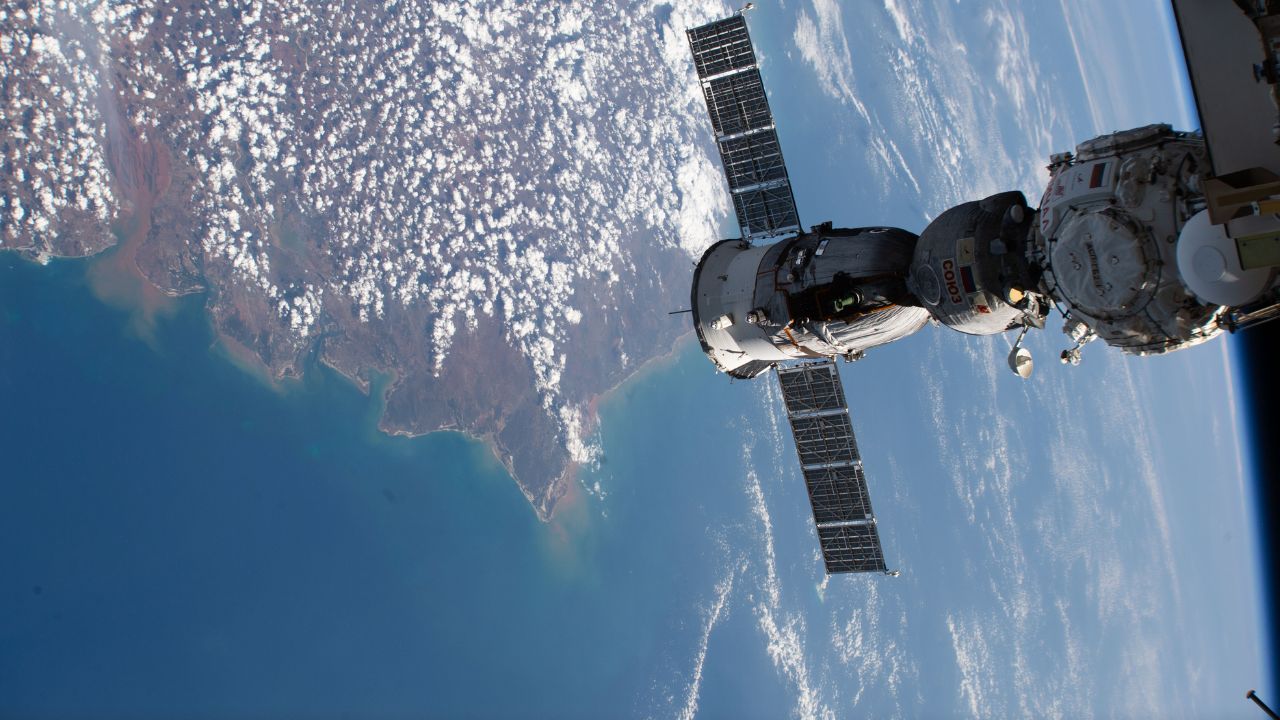Startups and Government-Backed Access to Space are Igniting the Orbital Revolution

Soyuz MS-27 spacecraft docked to the Prichal module above Madagascar
By Phillip Irace, Ph.D., P.E., Science Program Director at the ISS National Laboratory
September 26, 2025
This piece is part of our Forging the Path series in which CASIS® experts and partners share knowledge and insight on managing a national lab in space.
Phillip Irace, Ph.D., P.E., is the Science Program Director at the ISSInternational Space Station National Laboratory®, managed by CASIS® in partnership with NASANational Aeronautics and Space Administration. In this role, he leads initiatives spanning fundamental science and applied R&D that enable researchers to leverage the ISS as a test bed to advance scientific discovery and accelerate technological innovation.

Commercial startup companies aren’t just engines for innovation. They’re catalysts for economic transformation. From the mass production of cars in the early 1900s to the rise of modern-day computing, every industrial revolution has been sparked by startup companies that turn bold ideas into disruptive innovations. Nurturing startups isn’t optional; it’s vital for our economic prosperity and critical for safeguarding U.S. leadership in technological innovation.
This is especially true for the emerging low Earth orbit(Abbreviation: LEO) The orbit around the Earth that extends up to an altitude of 2,000 km (1,200 miles) from Earth’s surface. The International Space Station’s orbit is in LEO, at an altitude of approximately 250 miles. (LEO) economy, where technology creates and drives market demand. Startups are key to developing the innovations that will make LEO commercially viable. Yet, the space industry presents steep barriers to entry: high launch costs, long timelines for in-space demonstrations, and increasing budgetary, regulatory, and political uncertainty. These challenges make it difficult for space startups to survive, let alone thrive, in today’s fast-paced environment.
To unlock the next industrial revolution—the orbital revolution—we must equip space startups with the resources they need to succeed.
One of the most valuable resources for early-stage space startups is access to space itself. That’s why the Center for the Advancement of Science in Space® (CASIS®), manager of the International Space Station (ISS) National Laboratory, combines government-subsidized access to the ISS with other critical resources such as funding and business mentorship through accelerator programs.
For 12 years, the ISS National Lab has partnered with Boeing and MassChallenge to offer the Technology in Space PrizeA prize that provides grant funding for business startups participating in the MassChallenge startup accelerator program to conduct innovative research and technology development utilizing the ISS National Lab. The prize is funded by the Center for the Advancement of Science in Space, which manages the ISS National Lab, and Boeing. (TISP), a grant competition that provides startups with non-dilutive funding, business mentorship, and a flight experiment onboard the ISS. This unique opportunity enables startups to conduct proof-of-concept demonstrations in space at a dramatically reduced cost.
Over those 12 years, 33 startups have received a total of $10.5 million in funding and access to ISS resources. These companies have gone on to raise $441 million in follow-on grants and venture capital—a 42-fold return on the initial investment. The model works. Just ask the startups.
LambdaVision, awarded the TISP in 2016, used the ISS to demonstrate that microgravityThe condition of perceived weightlessness created when an object is in free fall, for example when an object is in orbital motion. Microgravity alters many observable phenomena within the physical and life sciences, allowing scientists to study things in ways not possible on Earth. The International Space Station provides access to a persistent microgravity environment. significantly improves the quality of thin films deposited for artificial retinal implants. These implants aim to restore vision for patients with macular degeneration. LambdaVision has since launched nine ISS investigations and raised more than $10 million in additional funding on its way to full-scale manufacturing in space.
Nicole Wagner, Ph.D., President & CEO of LambdaVision:
“Subsidized access to the International Space Station has been transformative for LambdaVision, helping to advance our mission toward restoring meaningful vision for millions affected by retinal degenerative diseases. Programs including the Technology in Space Prize gave us the opportunity to demonstrate that microgravity dramatically improves the quality of our artificial retina thin films. This has allowed us to develop solutions that will benefit not only LambdaVision but also other companies developing similar types of films —something that would have been out of reach for an early-stage biotech company without government support.”
Axonis Therapeutics, a 2019 TISP awardee, leveraged the microgravity environment of the ISS to self-assemble mature 3D human brain organoids, artificially grown tissue resembling parts of the human brain. The startup used the organoids to test a neuron-specific virus that was reprogrammed to carry a novel gene therapy to treat neurological conditions like Alzheimer’s, Parkinson’s, and spinal cord injury. Axonis has raised more than $150 million to advance first-in-class therapeutics through clinical trials.
Shane Hegarty, Ph.D., CSO & Co-Founder of Axonis Therapeutics:
“Conducting biotechnology research in space is not something you’d ever think about normally, but the opportunity to leverage microgravity conditions can unlock a lot of untouched potential by pushing the boundaries of science in a unique environment.”
Encapsulate, also awarded the TISP in 2019, tested its tumor-on-a-chip system onboard the ISS. By growing miniature tumors from patient biopsy samples in microgravity, the startup could identify optimal cancer treatments faster and avoid unnecessary toxic therapies. Encapsulate has raised more than $5 million and secured further ISS testing opportunities through a NASA In Space Production Applications (InSPA(Abbreviation: InSPA) InSPA is an applied research and development program sponsored by NASA and the ISS National Lab aimed at demonstrating space-based manufacturing and production activities by using the unique space environment to develop, test, or mature products and processes that could have an economic impact.) award and NASA Phase 1, 2, and 3 Small Business Innovative Research (SBIR) awards.
Armin Rad, Ph.D., CEO and Co-Founder of Encapsulate:
“For a seed-stage biotech, launch costs are critical—ISS National Lab support de-risked our platform, conferred flight heritage, and signaled technical credibility to partners and investors. It gave us the opportunity to demonstrate and complete proof-of-concept for new metastasis-detection technologies, resulting in two larger NASA projects to advance the next phases of development. This work is aimed at earlier cancer detection, better treatment decisions, and ultimately helping save patients’ lives.”
Building on the success of the TISP, the ISS National Lab launched the Orbital Edge Accelerator, a strategic partnership with TechConnect and venture capital firms CIRI, E2MC, and Stellar Ventures. This initiative bridges the gap between seed-stage startups and private capital, awarding six companies $500,000 each in investor funding, access to ISS resources, and business mentorship. The inaugural cohort was recently announced.
Yet, despite this momentum, the space industry remains challenging. Government budget uncertainties have raised concerns about fewer flights to the ISS, which means fewer payloads can be sent to the orbiting laboratory. The already significant backlog of payloads preparing for operations onboard the ISS may mean that no new R&D projects can be awarded through the end of station. This would create a looming gap of government-subsidized access to space while we await the launch of commercial space stations.
Compounding the issue, future space stations may lack a pipeline of R&D projects to sustain operations in LEO. Their business viability, and access to capital, depends on maintaining momentum now and over the next five years through continued access to the ISS. Startups are essential to this pipeline, and their ability to develop, mature, and validate technologies hinges on subsidized access to space.
As we transition from the ISS to commercial space stations and free flyers, cutting off subsidized access to space risks extinguishing the spark these startups have ignited. We must not let that happen.
The orbital revolution depends on it.